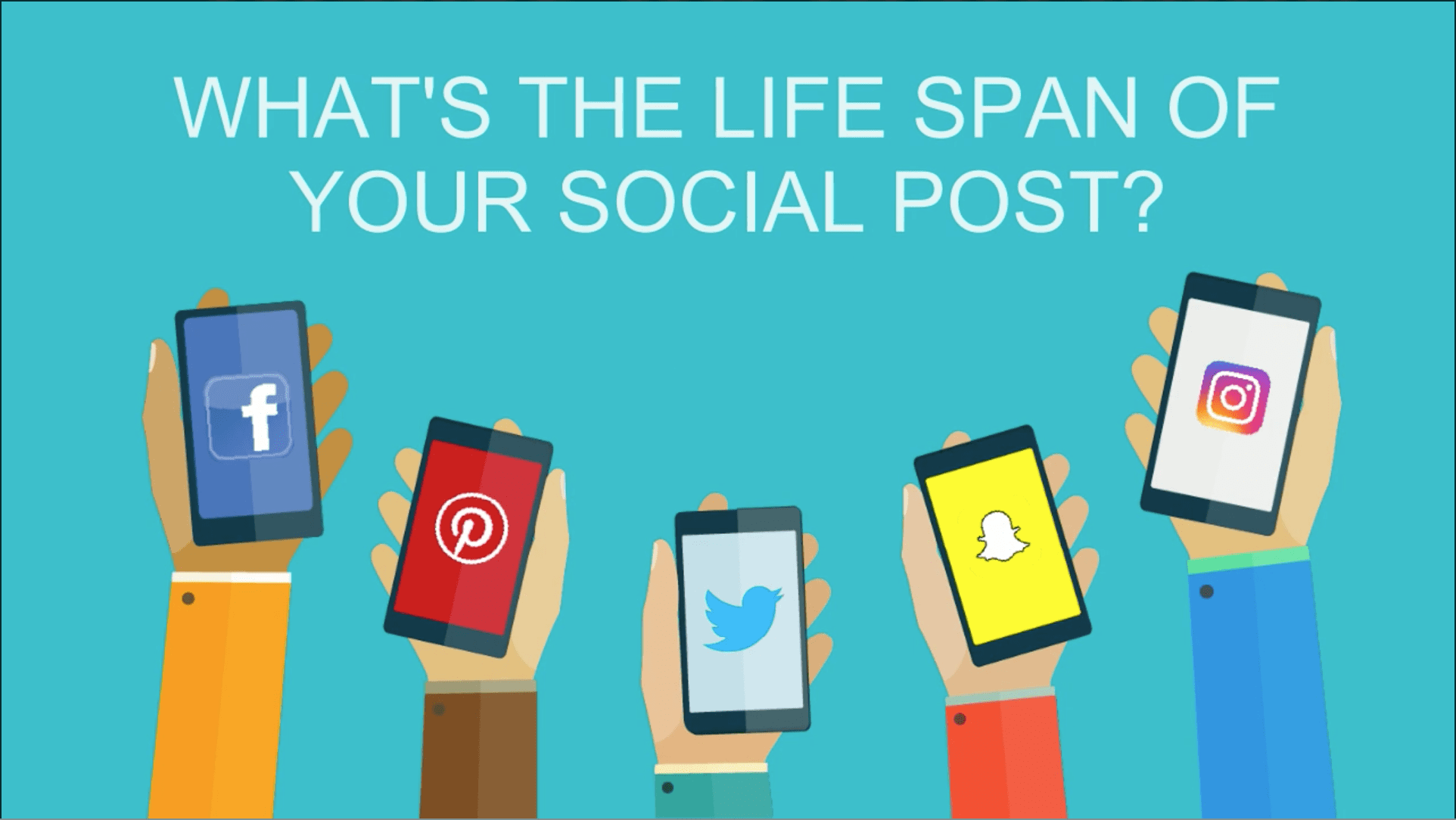A big challenge when developing your brand’s marketing strategy is figuring out how often to post to different social media accounts. You want to optimize your posting to reach and engage your audience just enough to stay top of mind without being overbearing.
It’s a tricky balance, and it’s even more complicated because every network has its own sweet spot (that’s always evolving). So simple, right?
Let’s look at some of the main social media players and explore how long you can expect your content to stay relevant on each.
Facebook has said that on average, a user could see 1,500 stories every time she logs in – but News Feed only displays about 300 of them. Over the years, Facebook has adapted its algorithm to rank stories based on what it deems most important to each user. Facebook just announced this week that it will be updating News Feed so users see even more posts from their friends and family – which may cause reach and referral traffic to decline for some Pages.
A few years ago, Wisemetrics published a study that found in 2 hours and 30 minutes, a Facebook post usually hit 75% of its maximum impressions, and 75% of engagement happens within the first 5 hours. This means it’s important to analyze Facebook Insights to see when the optimal time to post is. Test various times to track engagement, and try different ways of communicating the same message.
The lifespan of a tweet is predictably brief. It’s a medium that moves quickly and has a short attention span, and brands do well to post more frequently here than on other social networks. Wiselytics studied a million tweets (that had at least 10 retweets each) to find how engagement declines over time; it found that the average half-life of a tweet (its median lifespan) is 24 minutes. Moz found in its research that the number is around 18 minutes.
The quality of each Instagram photo you post is critical. Users are scrolling quickly through their feeds, so you need to have great content to catch their attention (especially since Instagram is rolling out a new algorithm that’s similar to the way Facebook ranks its News Feed).
A study from Simply Measured found that, on average, posts by top brands receive 50% of their comments within the first six hours and 75% within 48 hours. But high-performing posts (those with double the average engagement) see this peak later, taking more than 13 hours to reach 50% of comments. High-quality content has a longer lifespan on Instagram.
Pinterest is unusual because it’s a social network that allows for long-term engagement. Pins do have an initial shelf life when they’re first pinned and they show up in users’ feeds – but they can also be rediscovered and repinned over time, particularly if you optimize them with relevant keywords.
One marketing firm found that pins are outliers in this way; it gives the example of
a recipe pin from a food brand that received less than 50 repins the first week it was posted; but a year later, it had built up more than 2,400 repins. Other brands it works with are seeing web traffic and sales driven by pins after weeks or months of the initial post.
Snapchat
Snapchat is notorious for its quick content shelf life; after all, a standard snap can only be viewed for 1 to 10 seconds before it disappears forever. But Snapchat Stories offer brands the opportunity to create a longer piece of content (by stringing together a series of snaps) that can be viewed as many times as users want for up to 24 hours. This is still a short period of time in terms of traditional marketing, but it gives your brand the chance to get creative and tell a narrative in a very different way than you would on any other medium.
Follow MtoM on Snapchat!


